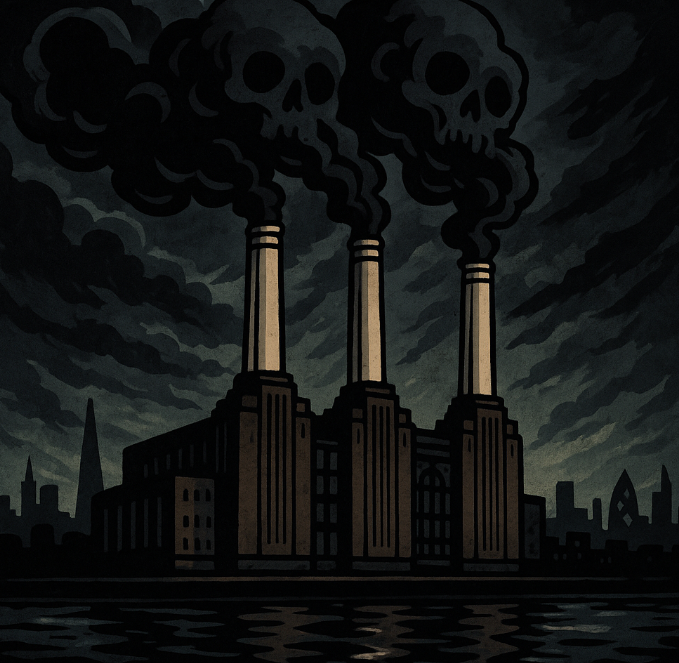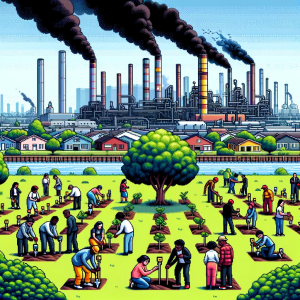
Cutting Emissions Could Save 14,000 Lives a Year
Carbon credits are back in the news, thanks to the role they play in this amazing reporting by Pablo Torre.
The story itself is crazy, and the role carbon offsets play is only tangential. Yet, it got my thinking about the recent research on this topic.
A third of all U.S. greenhouse gas emissions come from factories, refineries, and other industrial giants. That’s right—just a few thousand facilities are responsible for a massive chunk of the problem fueling climate change. On paper, the fix sounds straightforward: make the industry cleaner. In practice? The story is much messier, and the stakes go far beyond carbon math.
Here’s where things get interesting: industrial decarbonization—the push to slash emissions from heavy industry—could bring huge benefits like cleaner air, better jobs, and billions in public health savings. But it could also lock communities into new risks if done without their say. So the real question isn’t just how we decarbonize, but who gets a seat at the table while it happens.
A Tale of Two Futures
Picture two towns. In the first, a carbon capture facility opens next to an old power plant. The company promises jobs, but within a few years, residents notice new chemical smells, higher asthma rates, and little to no say in how the project is run. The town feels like history repeating itself: once again bearing the costs of industry without the benefits.
In the second town, neighbors work side by side with researchers to design a carbon storage hub. They demand strong monitoring of air and water, insist that jobs go to locals (including those with criminal records), and ensure the project tackles emissions from local cement plants rather than bailing out oil and gas companies. The result? Cleaner air, healthier kids, and real economic gains.
Same technology. Two radically different outcomes. The difference? Community power.
The Promise: Cleaner Air, Safer Jobs, Longer Lives
Let’s talk numbers, because they’re eye-popping. One study projected that by 2050, industrial decarbonization in California alone could prevent 14,000 premature deaths, with 35% of those health gains landing in historically marginalized communities. Nationwide, the monetary value of these health improvements could top $215 billion, far outweighing the costs of decarbonization projects.
Other studies estimate up to 131,000 new high-wage jobs could emerge by 2035 as factories upgrade and retool. Add in the potential for innovation spillovers—new tech, stronger manufacturing, and fresh tax revenue—and you start to see why policymakers call industrial decarbonization a “triple win”: climate, economy, health.
The Catch: Pollution Doesn’t Always Disappear
But before we break out the confetti, here’s the twist. Not all decarbonization tech delivers evenly. Carbon capture systems, for instance, can cut carbon dioxide but increase other pollutants like ammonia or fine particles that worsen asthma. One analysis showed particulate matter could actually rise by 20% under certain decarbonization scenarios. And guess who tends to live closest to those plants? Low-income communities and communities of color.
This isn’t just bad luck. Decades of research have shown that pollution burdens fall disproportionately on marginalized groups. In fact, the most polluted neighborhoods in 1981 are still the most polluted today. Decarbonization, if done carelessly, risks locking those inequities in place.
The Eureka Moment: Slowing Down to Speed Up
Here’s the surprise: moving too fast can actually stall progress. Early federal funding rounds for decarbonization projects required companies to draft “Community Benefit Plans.” On paper, these plans sounded great: 40% of benefits should go to disadvantaged communities. But many projects treated engagement as a box to check, not a real partnership. Communities saw through the PR spin, and some projects faced backlash, protests, or even cancellation.
Researchers and activists argue that the fix is simple but radical: treat communities as experts. Not as stakeholders to appease, not as boxes on a form, but as co-designers of the energy future. This means funding community visioning before projects are finalized, training engineers to value social justice as much as technical specs, and creating siting processes where communities can say “yes,” “no,” or “yes, but only if…”
Why It Matters for Everyone
You might be thinking: “I don’t live near a refinery or cement plant—why should I care?” The answer is scale. Industrial decarbonization isn’t just a local issue; it’s global. Cleaner industry could dramatically lower emissions worldwide, but the success of these projects hinges on whether communities trust them. No trust, no projects. No projects, no decarbonization at the speed we need.
Think of it this way: slowing down to build trust might actually be the fastest route to a livable planet. And the benefits ripple outward—stronger local economies, fairer health outcomes, and a cleaner environment for everyone.
Let’s Explore Together
Industrial decarbonization sits at the crossroads of technology, justice, and our shared future. Will it be a story of “false solutions” that prop up old industries, or a new chapter where communities lead the way to cleaner, fairer economies? The answer depends on how much we’re willing to value voices that have too often been ignored.
Now it’s your turn:
- How do you see this research affecting your life or community?
- If you could redesign a local factory, what would you prioritize—jobs, health, or something else?
- What’s the coolest science fact about clean energy you’ve learned recently?
Share your thoughts below or on social media. After all, the clean energy future isn’t just about carbon—it’s about all of us.



